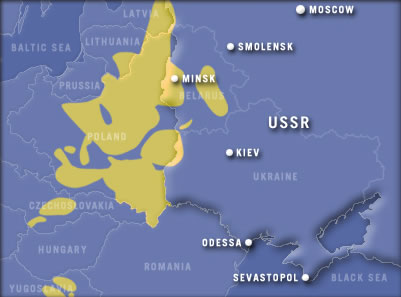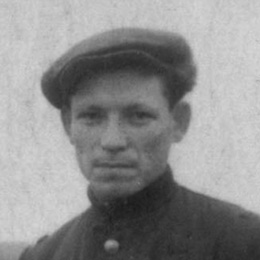Soviet Union

Fewer ghettos were established in the Soviet Union than in other occupied countries. Many Russian Jews were killed by the Einsatzgruppen, the mobile Nazi killing units or in the camps. In Byelorussia, it is estimated that thousands of Jewish partisans escaped the Minsk ghetto into the forests of Slutsk and Koydanov, where they formed seven companies of fighters. According to one estimate, 11,000 Russian Jewish partisans fought in Byelorussia and western Ukraine alone. Others have estimated the number to be between 12,000 to 15,000 – the greatest concentration of Jewish partisans in the movement.
Without the aid of Soviet partisans, the chances of survival for the Jewish partisans were very slim. Beyond the barbed wire and sentries of the ghettos, there were spies in the villages, armed sentries on bridges and on roads leading to the forests, ambushes, or the likelihood of being turned in by peasants paid to inform by the Nazi authorities. Polish, Ukrainian and Lithuanian guerilla bands were often as hostile as the Nazis, and freely killed Jews.
Joining a Soviet partisan group was extremely difficult. The first requirement was have a weapon, an extremely rare commodity for a Jew to find. Russian Jews who joined Soviet partisan groups often banded together to form all Jewish or mostly Jewish units, as some of the Soviet partisans were antisemitic. As the Soviet partisan movement grew and expanded Jewish units were absorbed into others.
While all-Jewish groups were opposed by the Soviet command, persecution of Jews from within the Soviet partisans was also officially opposed (though often tacitly accepted). In many cases, Jews thwarted the antisemitism by hiding their Jewish identity in order to join. Some also fought as members of independent all-Jewish groups, forming ties with nearby Soviet partisans. Byelorussian Jewish partisan leader Tuvia Bielski and his brothers, for example, combined resistance and rescue to form one of the largest groups of Jewish partisans anywhere. The Bielski group gave shelter to any Jew, regardless of whether or not they could fight, establishing a village of 1,200 men, women, and children inside Nazi-controlled territory, which they successfully defended through the end of World War II.



